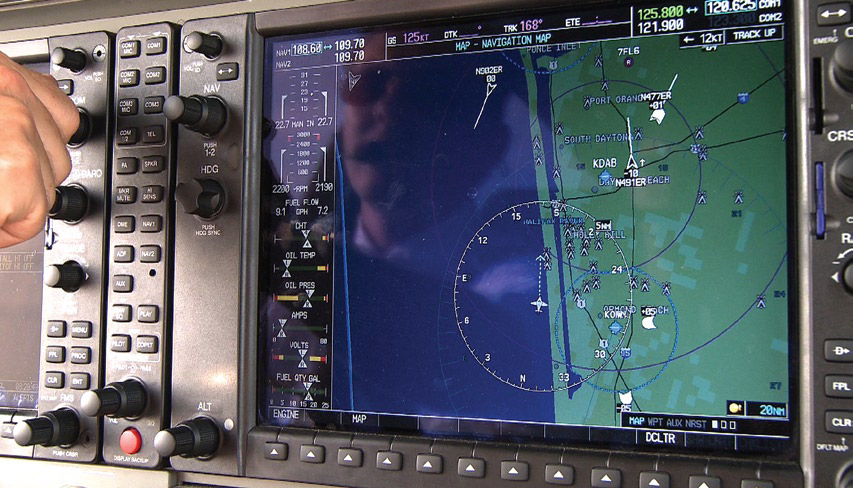Technology
Safety Spotlight: Collision Avoidance

Technology in the cockpit can help pilots see and avoid other aircraft. All air carrier aircraft are equipped with Traffic Alert and Collision Avoidance Systems, commonly referred to as TCAS.
TCAS I
This system indicates the relative altitude, distance, and bearing of transponder-equipped aircraft within a selected range, generally up to 40 miles. With color-coded symbols and aural warnings called Traffic Advisories (TAs), the system indicates which aircraft pose a potential threat. TCAS I identifies potential problems, and although it does not offer evasive solutions it supplies important data for determining the best course of action.
TCAS II
In addition to a traffic display, TCAS II provides Resolution Advisories (RAs) when needed. The system determines the course of each aircraft and whether it is climbing, descending, or flying straight and level. It then issues a RA advising to climb or descend as necessary to avoid the other aircraft. If both aircraft are equipped with TCAS II, then the two computers offer deconflicting RAs, ensuring pilots’ actions minimize, rather than exacerbate, a collision threat.
ADS-B
Automatic Dependent Surveillance Broadcast (ADS-B) represents the next generation of collision avoidance technology. An ADS-B-equipped aircraft broadcasts a signal that contains a GPS-derived location. The signal, rebroadcast by a ground station or satellite, can be displayed in other ADS-B-equipped aircraft, giving pilots critical collision avoidance information without input from ground-based air traffic controllers.
There are two primary ADS-B types:
-
ADS-B Out—(required in airspace where prior to January 1, 2020, transponders were mandatory) broadcasts an aircraft’s GPS position to ground stations and directly to equipped aircraft.
-
ADS-B In—(optional) generally refers to transmission of weather (FIS-B) and traffic information (TIS-B) into the cockpit, where it can be displayed on panel-mounted avionics or a tablet, like an iPad.

ADS−B, TIS−B, and FIS−B: Broadcast Services Architecture
Image: Courtesy FAA
Let’s look at ADS-B In Traffic Information Services–Broadcast (TIS-B)
TIS-B not only provides ADS-B air-to-air traffic information but also radar targets sent from ground stations. Therefore, the traffic displayed in the cockpit will give you a more complete picture of traffic around your aircraft.See In and Out With TIS-B
Using TIS-B’s in-cockpit traffic display service can greatly enhance your situational awareness and aid in the avoidance of other traffic. It’s also free (no subscription required) and there is no usage fee. Here’s how it works:
- TIS-B captures the position and altitude of an ATC radar target and converts that information into a format that’s compatible with ADS-B
- TIS-B then transmits that data to ADS-B data-link equipped aircraft over either the 978-MHz universal access transceiver (UAT) or 1090-MHz extended squitter (ES) frequencies
- The aircraft must have ADS-B In and fly within radar coverage
- TIS-B is available to equipped aircraft flying at or below 24,000 feet (FL240)
 Image: Courtesy FAA
Image: Courtesy FAA
Got the Traffic!
With air traffic continuing to increase, it’s critical to get all the help you can to spot conflicting traffic. If you’ve flown without an in-cockpit traffic display, whether receiving flight following service from ATC or on an IFR flight plan in VMC, you know it’s not always possible to see the traffic a controller warns you about.
So, get some help in the form of TIS-B—it not only provides ADS-B air-to-air traffic information but also radar targets sent from ground stations. Therefore, the traffic displayed in the cockpit will give you a more complete picture of traffic around your aircraft and allow you a more effective visual scan of the air outside the cockpit window. In addition, it will enhance communication with air traffic controllers about seeing and avoiding the conflicting traffic. So, next time ATC tells you, “traffic 2 o’clock, altitude unknown,” you’ll be able to pinpoint where that traffic is by first looking at your in-cockpit display followed by scanning the sky and acquiring the target traffic.
Note: TIS-B may not show all aircraft in nonradar areas, where ADS-B is not required, or aircraft without electrical systems.
Make the Most of It
- Understand the equipment—Become familiar with the in-cockpit traffic display equipment installed in your aircraft
- Equipment operation—Ensure the equipment operates properly
- Situational awareness—Use the in-cockpit display to enhance situational awareness and help mitigate the limitations of see-and-avoid
- Alert devices—If not already providing an aural alert concerning collision threats, consider supplementing the display with both aural and visual alert devices
- ATC communication—Use TIS-B technology to enhance communications with ATC about conflicting traffic
NTSB Animation Midair near Ketchikan, Alaska
This animation explores a number of aspects of a midair collision between a de Havilland Beaver and a de Havilland Otter. The float-equipped airplanes collided about eight miles northeast of Ketchikan. Learn more how ADS-B Out and ADS-B In support traffic advisory systems with visual and aural alerts that can mitigate the risk of a midair collision.
